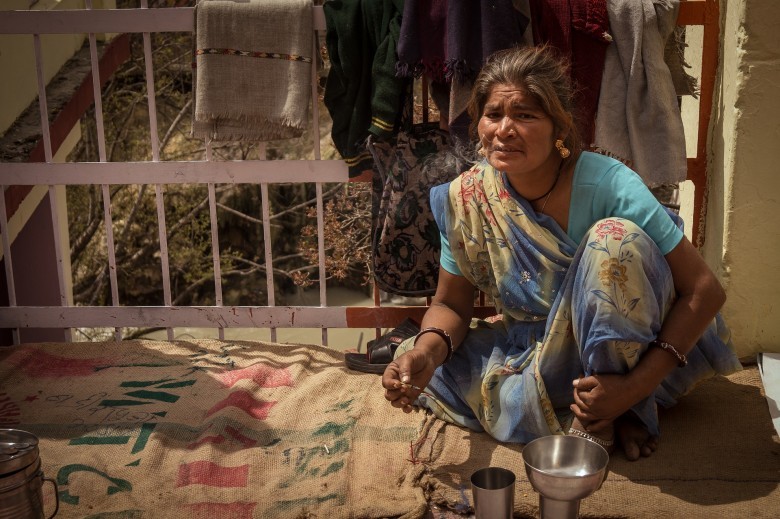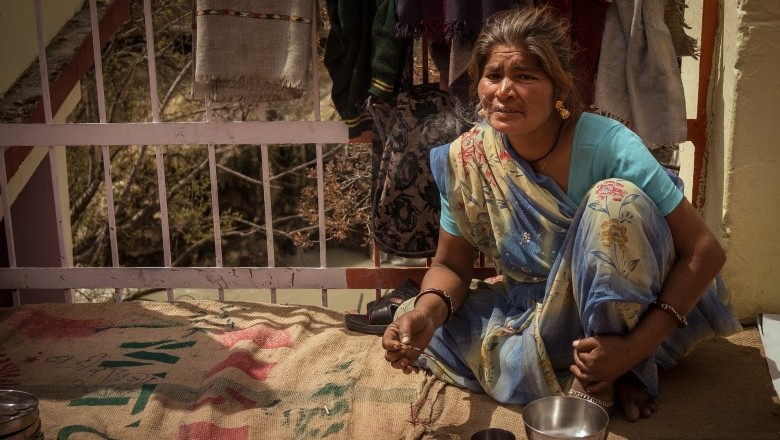
Beggary: Issue and Challenge for the City Beautiful, Chandigarh
Beggary: Issue and Challenge for the City Beautiful, Chandigarh
Beggary is considered more or less one of the oldest professions of our society, though its tag has been usually contradictory with the parameter of law. Usually, people adopted begging because of destitution, broken homes, diseased, physical handicap and unguided childhood etc. Generally they are available at rubbish dumb, road sides, and traffic lights and under flyovers. The term varies in terms of connotation, degree and kind.
Traditionally begging has been an accepted way of life in India, e.g., religious mendicants. Giving alms to the needy remained an ingredient part of the socio-religious fabric. Destitution was previously accommodated in the rural, pre-development state ethos, whether it was the bhikshu ideal in Hinduism, or zakat in Islam, or the Christian ideal of charity, vagrancy and need were dealt with from within the social support structures. Colonialism begins to figure imperative of beggar to the needs of labour production. It was during the colonial rule that the analysis of idleness - and its condition and effects - tends to replace the somewhat traditional sacralization of the beggar.
Colonial laws held a beggar punishable for his condition. The newly independent nation imbibed this attitude towards beggar. In the new millennium the Government doesnt want them laying around middle class regards them as a nuisance. Begging has become a disapproved, though tolerated, form of social behaviour. So, beggary has become a social problem of great magnitude and grave concern in India.
Begging is a problem for society in as much as a large number of beggars means non utilization of available human resources and drag upon the existing resources of the society. It is not a matter of offering support to a particular fragile, troubled and troublesome margin of the population, but of how to raise the level of health and economy of the social body as a whole. The biggest problem lies in the changing attitude towards beggars and their rehabilitations.
While Indias economy may be growing faster than ever, so are income inequalities. According to a census in 2001, there are about 6,27,688 beggars and vagrants in India and it can be very well imagined that the numbers would have shot up in the past years. There are some 60,000 beggars in Delhi, over 3, 00,000 in Mumbai according to a 2004 Action Aid report; nearly 75000 in Kolkata says the Beggar Research Institute; 56000 in Bangalore according to police records.
In Hyderabad one in every 354 people is engaged in begging according to Council of Human Welfare in 2005. A survey done in 2004 by the Social Development Centre of Mumbai revealed that Mumbai is home to majority of beggars. According to the Maharashtra Government they are worth Rs. 180 crore a year with daily income ranging between Rs 20-80. Almost every survey profiles beggars as a largely contented lot unwilling to take up honest labour. The increasing population of beggar has posed a serious threat to the very fabric and existence of society and also questions the competence of the very legal apparatus.
Another facet of the beggary is in the form of organized racket. The child beggars are part of a forced beggary racket. Small children have been kidnapped by beggars, to be used as hapless aids in furtherance of the business that begging had become. Child beggars, consider a certain margin of illegality, is not seen as a serious problem, but rather as perfectly tolerable by the population. Beggings no longer limited to a few stray beggars driven to seeking alms as a last resort.
It has become a profession for some, a way of life for others, and more horrific still, a lucrative racket for unscrupulous and ruthless operators, who have spawned a virtual beggar mafia, using raw materials poor, destitute and helpless. Children are trained how to carry crutches to appear disabled on road and later paid commission out of their daily earnings. The Indian Penal Code (Section 363A) deals with the kidnapping and maiming of a minor for purposes of begging. However, there is hardly any evidence on the part of law enforcement agency to arrest people who maim or coerce children, who were living off their earnings, for purposes of begging.
Literary, journalistic, medical, sociological and anthropological rhetoric about beggar play an important role in engendering an unwanted image of beggars. Beggars constitute a large chunk of Indian population yet they dont have unions, they are no partys voter bank and the majority of privileged detest them. They are not resistance group of the society, so the state neglects to consider seriously beggary as problem in itself and to others. Legal apparatus utilized surveillance and repression but still has no comprehensive welfare system to keep millions of people out of desperate poverty, a premise of beggary.
Indias beggary laws are a throwback to the centuries old European vagrancy laws which instead of addressing the socio-economic issues make the poor criminally responsible for their position. The definition of beggar in law is synonymous to anyone who appears poor. The anti-beggar legislation is aimed at removing the poor from the face of the city. The beggars who have spent years on the street find it very difficult to live in confined space. However, as the moral basis of traditional society crumbles, responsibility towards the needy is shifted to state welfare schemes. There are provisions for vocational training in the government run beggar homes. But these are worse than the third rate jails where convicts can spend up to 10 years, as stated by many reports.
The Beggary Prevention laws lumps together various kinds of people, including street performers, mendicants and small vendors who might solicit alms `indirectly, as beggars. In the Beggar Prevention Acts implemented in many cities and states, beggars has been described as people "having no visible means of subsistence and wandering about, or remaining in any public place in such condition or manner, makes it likely that the person doing so exists by soliciting or receiving alms." This single clause ranges itself against anyone who appears poor and destitute.
Thus, a rag-picker or a migrant labourer who may never have begged in his or her life can be picked up and incarcerated in a beggars home for a period of up to three years at a stretch. Statutory institutions were set up for the prevention of begging; the detention, training and employment of beggars; and the custody, trial and punishment of offenders under the law. Once jailed, he/she is stripped him of his civil status and when he came out nothing accept the tag and also have professionalized due proximity to a closed milieu of beggar thoroughly structured by law.
Usually, laws far from transforming them into honest and abler citizens, serve only to manufacture new criminals, and to drive them ever deeper into criminality. Begging as an object of analysis and concern, surveillance and control, engenders at the same time an intensification of beggary. The anti-beggary law itself does not draw any distinction between organized begging where one or more persons are compelled to beg by force and people who beg to sustain themselves. People who are driven to begging - many of whom are unable to find employment because of old age, physical disability, or drug problems - would remained as desperate as before. An analytical reason for repression is far from justifiable and contradictory with the premise on which the very law has been erected.
It is perfectly obvious that all the laws against beggars connote three distinct implications.
a) Beggary has been considered synonymous as to do nothing, who are responsible for their own circumstances.
b) They are labeled as marginal, dangerous, immoral, a menace to society as a whole, the dregs of population etc. fitted for the prison.
c) The legal system designed them as, who had to be isolated from the population so that they could not resort to theft, plunder and other crimes.
d) A double standard discourse of beggar has emerged as taking is a sin but giving is not.
Issue and Challenge for Chandigarh
The Union Territory of Chandigarh is the capital of both states of Punjab and Haryana. The Swish-French architect Charles Edouard Jeanneret (Le Corbuser) was the creator of the city, which has an area of 114.59 sq. km. It was inaugurated by the first Prime Minister of India, Jawaharlal Nehru in 2 April, 1952. According to the Census Report 2001, it has a total population of 9,00,914, and literacy rate was 81.76 per cent. Majority of the population were either engaging with government services or retired from the government services. The second source of income for the people is provided by the industries dealing with various products. The major industries comprise manufacture of paper, basic chemicals, basic metals and alloys and machinery.
Some other important industries include food products, metal products, electrical goods, transport equipment and repair services. The newly evolving IT industry in the area also added the development of the city. Besides all these, the ancient idea of giving alms as a religious duty or moral obligation is still strong in Chandigarh. Various religious places, tourist spots and the well-to-do economy turn out to be a curse for attracting diverse types of beggars. So, many people find the city beautiful a lucrative spot for begging.
The earliest law concerning to begging was that of the Punjab Municipalities Act 1922 provided under Section 151 (which was inserted in 1933) that a person found begging or evoking alms could be arrested and sentenced to a maximum of three months imprisonment and /or a fine of Rs.50/-. This Act has never been amended again after independence. Till then, there was no law governing the citys beggars and also there was no survey to support the figure. But, in 2003 the Haryana Prevention of Beggary Act, 1971, was extended to Chandigarh.
The presence of beggars in Chandigarh is not a new phenomenon. Shanti Devi (1962) confirmed this point and reported that most of them were from outside states. Labourer and petty workers parents usually sent out their parents for begging. Majority of the beggars were migratory or temporary feud, and also majority were able-bodied. During the last two decades the Chandigarh administration has made attempt to deal with the increasing number of beggars in and around the city.
Attempts in the past by city officials to make Chandigarh a beggar-free city have failed. There is no proper enumeration of beggars in the city. They were ubiquitous at market places, traffic intersections and other busy spots. The city has a population of nearly 1.1 million residents, of which over 300,000 live in slums. To overcome the menace of child labour, several NGOs and the administration have launched special campaigns to rehabilitate child labourers and beggars. Since January, 2008, the Chandigarh administrations has made a data bank of over 7,000 child beggars and labourers who cannot be enrolled in regular school systems.
They were provided food, educational facilities, clothing and even a stipend of Rs 250 per month to discourage them from begging. But to the astonishment of the campaigners, the beggars simply banished to avoid the rehabilitation scheme. "The beggars simply evaporated after word spread that city officials were trying to trace them. We know that they must have shifted their activities to the citys periphery for now but that has hampered our campaign. They have left us begging for beggars," said by an education official. Campaigners seek the help of locals, telephone numbers have been provided to give any information about beggars, especially children, so they can be caught and rehabilitated. Education officials feel the sudden disappearance of the beggars from the city indicated that they were being controlled by a local mafia which may have instructed them to keep away for a few days. But, one effect of the campaign is that temporarily the city has become free of beggars.
Ramanjit Sidhu in The Tribune News Service Chandigarh dated 19April, 2007, wrote Beggars are found everywhere in the city- at flood traffic light point, in commercial areas, the university and religious institutions. The report lamented that despite having the Haryana Prevention of Beggary Act, 1971, the police remain mere a spectator and doing nothing against the beggars. The beggars not only violate the law, but cause traffic disruption, putting their lives as well as those of commuters to jeopardy. In 2005, the police arrested five persons for beggary out of which one was acquitted. In 2006, as many as 11 persons were arrested, the court convicted 10.
In 2007, the police held 10 persons and seven were convicted. In the same line, another article by Aditi Tandon in The Tribune News Service Chandigarh dated 19April, 2007, reported the story of a four-year-old Muskan who was a novice at begging. Forced into begging when her parents died, she has mastered the art enough to pose competition to seniors. And, she loves her "job" which she finds lucrative. Sharing of her earnings to "bada bhais (big brothers/ bullies) for sharing begging space was also noted by Muskan. But, legal enforcement agency has refuted the prevalence of begging syndicates in Chandigarh. The law doesnt recognize children below seven as juveniles. No wonder, it is evident that begging is a full-time occupation, thriving due to poor law enforcement.
An interesting story was carried out in the Times of India, dated 22 April 2007 that of a beggar who stays usually stays in three-star hotels of the city, which charges a minimum of Rs 3,000 a day. So when policemen found short-stature and lean, dressed in a long, dirty kurta 45-year-old Shankar Mehta at Hotel Shivalikview, a beggar to be one of the hotels regular clients, they were left zapped. They were stunned to find an expensive mobile, a DVD to drive away boredom and a bottle of English whisky to wash down dinner in expensive eateries.
Watching with an amused grin, Shankar pulled out Rs 3,000 from his pocket along with a packet of expensive cigarettes and handed these over to the amazed cops. A key, also recovered from his Mary Poppins bag, proved to be that of a hotel in Atawa where he had hired a room for months time at the cost of Rs 7,500. During summer he visited Shimla on a holiday. Shankar Mehta had been begging in the city for four months and has accounts in several banks. This undermines the notion that many people beg out of necessity and compulsion. It has added a new dimension which contradicts the virtue, piety and sacred morality of the people.
Regarding rehabilitation, the UT administration has notified Nari Niketan in Sector 26, Old Age Home Building in Sector 15 and Juvenile Home in Sector 25 as certified institutions for keeping beggars. Besides, to overcome the menace of child labour, several NGOs and the administration have launched special campaigns to rehabilitate child labourers and beggars. The challenge is to convince the parents that they should not force their children to work or beg on the streets.
The reviews have turned realistic at the Alternative Innovations and Education Centres under the Sarva Shiksha Abhiyan. Chandigarh successfully enrolled over 400 children in 190 centres. For securing a future beggar free society Jeevan Mukat Nishulak Vidiyaavom Prorh Shiksha Kendra, an NGO imparts free education to over 200 child beggars in different sectors of the city to equip knowledge. The measures for the beggar free society were remained inadequate. Besides handling child beggar, that too in-take was mostly from slum areas, the administration has failed to short out an inclusive beggar policy and implementation. Lack of academic research on the issue is another factor which ha The problem still remains far from achievement.
The problem of beggary is not limited to us only but largely to themselves also. Taking consideration all the above analysis, the following recommendations have been made:
a) The first step towards preventing begging is a total and complete ban on beggary in any form;
b) Child, women, handicap and diseased beggars should be emphasized in rehabilitation program, so that they could realized their full potential and growth;
c) Comprehensive and compatible rehabilitation programs and homes for the existing beggars including post-institutional care or follow up services;
d) There should be provision for proper repatriation of beggars, coming from outside states, to their respective states;
e) The government must included the help of NGOs, social workers and also the civic bodies, so that the cancerous growth of beggary can be eliminated;
f) The public should be made awareness not to encourage beggary by giving alms in any form;
g) Academic researches on the issue should be encouraged from time to time to check and enhance the curbing of beggary problem.
References
Beggar among 3-star hotels guest list. in the Times of India, Chandigarh, dated 22 April 2007.
Devi, Shanti (1962) Beggars in Chandigarh. an unpublished M. A. Dissertation submitted to Depatment of Sociology, Panjab University.
Gore, M.S. et. al. (1959) The Beggar Problem in Metropolitan Delhi. Delhi: Delhi School of Social Work
Plea on beggars: Problem not so serious in city, Administration cites report. The Express News Service dated December 1, 2007.
Sidhu, Ramanjit (2007) Beg your pardon, khaki slip is showing. The Tribune News Service, Chandigarh, dated 19April, 2007.
Tandon, Aditi (2007) Beggary lucrative trade for minors. The Tribune News Service, Chandigarh, dated 19April, 2007.
The Haryana Prevention of Beggary Act, 1971





















